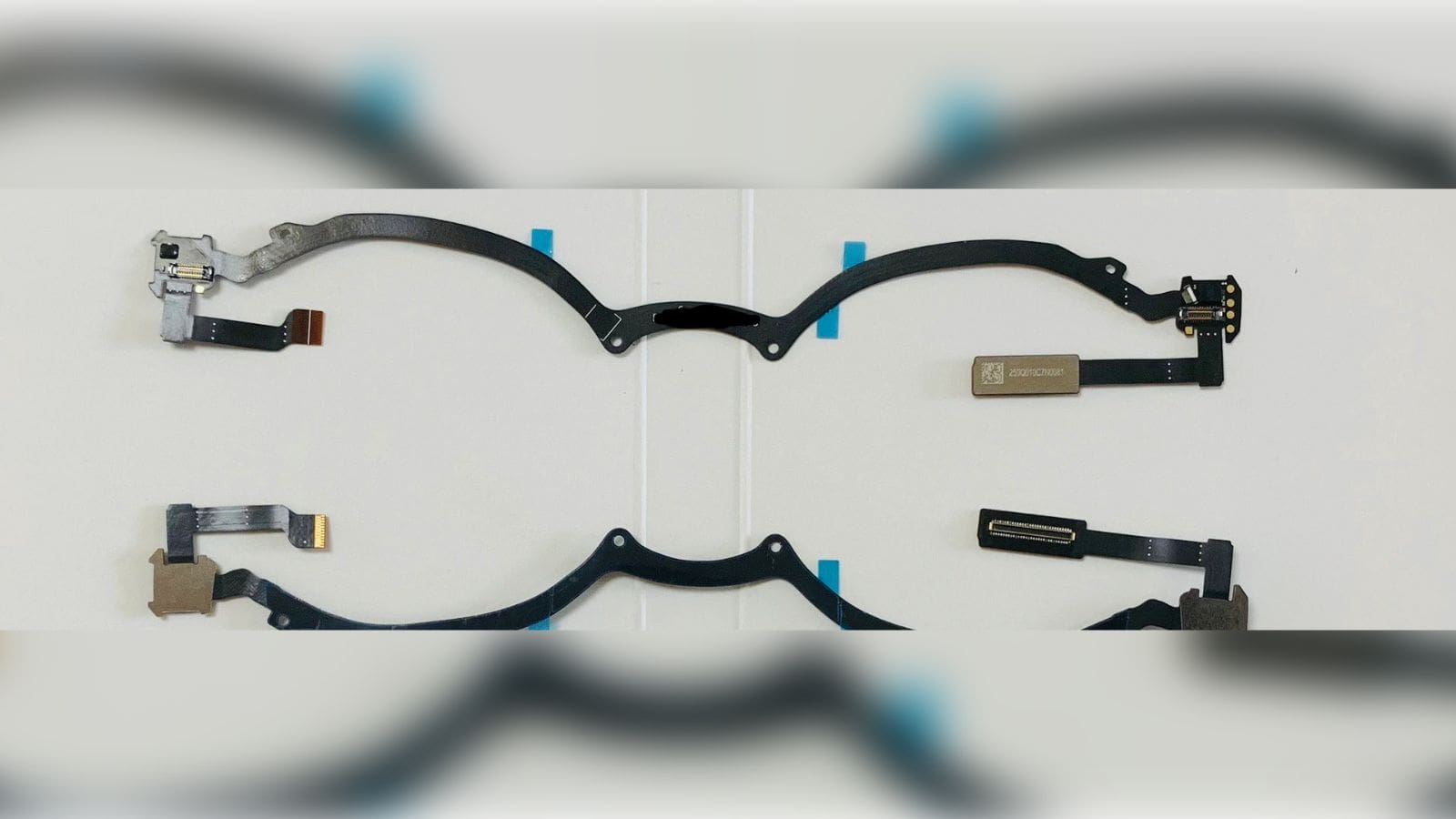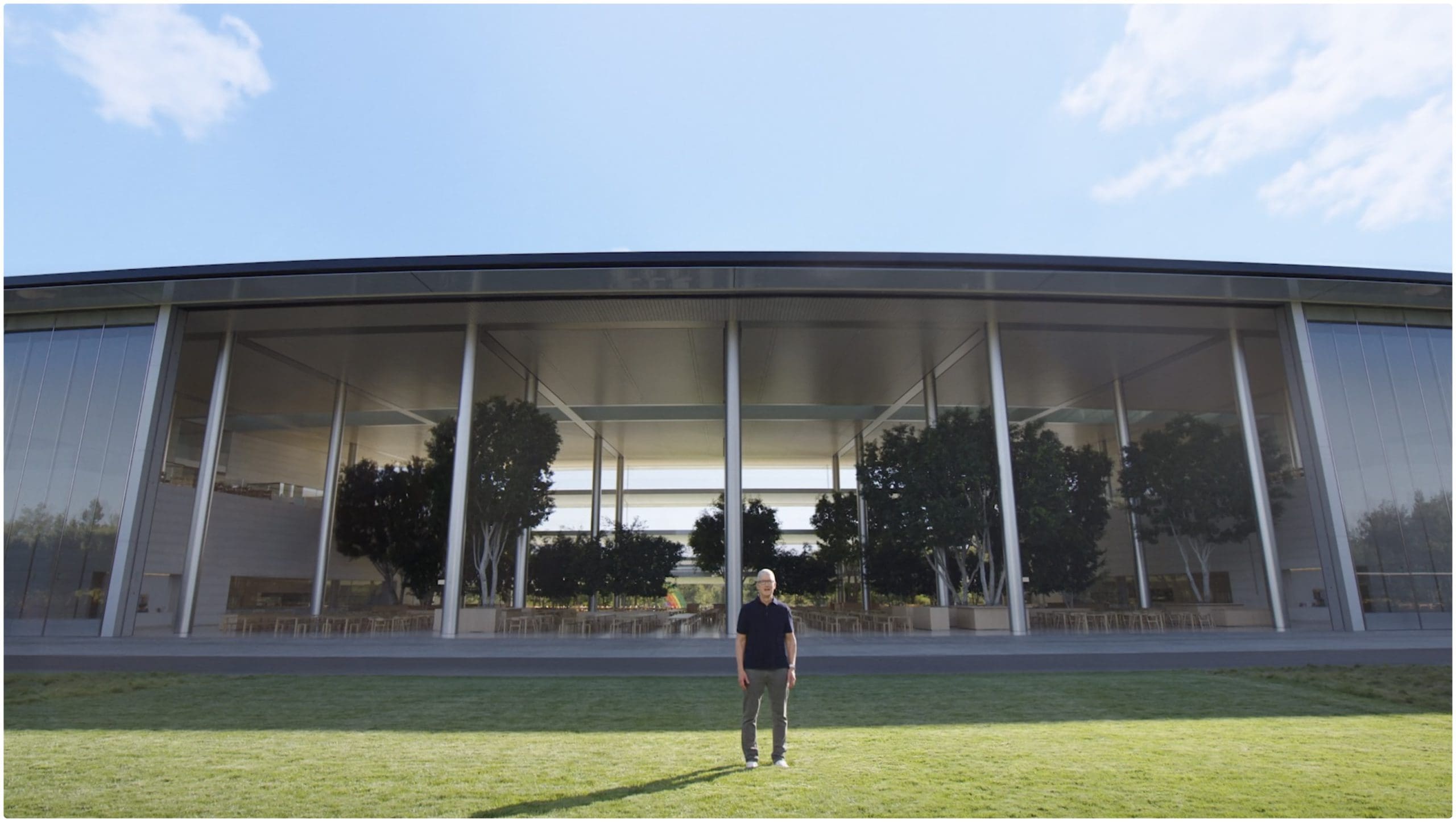Related Reading
Contents
WWDC 2023: AR/VR Headset
There are a couple of products that Apple has been rumored to be working on behind the scenes for years now. One is the Apple Car, which seems further away than ever, and the other is a headset capable of using both augmented reality and virtual reality.
Initially, the headset was rumored to launch in 2020, before continuing to be delayed. More recently, reports suggested Apple would hold a media event in January 2023 to showcase the headset, before those plans were also canceled.
Now, it appears as though Apple isn’t going to delay any further and will instead introduce its first AR/VR headset at WWDC 2023. Not much has been leaked in the way of physical elements, except for the image of the ribbon cable components you see above.
Some of the expectations for an Apple AR/VR headset include the ability to switch between AR and VR using a “Digital Crown-like control knob.” It is also said to require an external battery pack, while also being lightweight and comfortable.
Apple is expected to include the option for prescription lenses while relying on a series of 4K micro-OLED displays. Powering the AR/VR headset will be one of Apple’s M-series processors, and we wouldn’t be surprised if it were an M3 chip if that’s also announced at WWDC 2023.
From the software side, there have been references in iOS to a new operating system dubbed “xrOS.” With this, there will be a dedicated App Store, in addition to a “unique FaceTime experience”, along with the ability to use the headset with your favorite iPhone and iPad apps.
The biggest downside to the Apple AR/VR headset is likely going to be the price. While there are rumors of plans for a cheaper version to launch sometime in 2024, initial indications are that the first iteration will be priced somewhere around $3,000.
This could spell disaster for the company, as even the Meta Quest Pro, which launched with a $1,499 price tag, was recently reduced to $999, permanently. But Apple has a way of “weathering the storm” better than other companies, so perhaps Apple is just trying to get the product out of development and into the hands of users before working on a more affordable option.
We’re not going to dive too deep into the speculation about what Apple could unveil from the software side of things at WWDC 2023. But rest assured, the company will unveil its latest version of iOS, iPadOS, watchOS, and macOS at the event.
This is the case every year, and since it’s a Developer Conference after all, the software is the name of the game. While there have been some rumors that suggest big changes are afoot, this could only be partially true, at least with the iPhone and/or iPad.
If Apple follows through and actually unveils its first AR/VR headset, we expect there to be a bunch of changes so that it works with Apple’s other devices. Likely, this means that any hopes of a drastic overhaul of the iPhone Home Screen are unrealistic.
Unfortunately, this also might mean that Apple actually fixing Stage Manger on iPadOS could be put on the back burner. Many of the rumors suggest this is an “all hands on deck” situation for Apple, meaning that other potential features could be delayed.
The transition from Intel to Apple’s M1 chip single-handedly changed the game in the computing world. The performance gains alone are still worth considering, even if it’s just a base model M1 MacBook Air or Mac Mini.
However, the jump from the M1 to the M2 wasn’t quite as impressive, as it’s been more of an iterative update than anything else. But if recent reports and rumors are to be believed, the Apple M3 chip could be as big of a jump as going from Intel to Apple Silicon.
What makes the Apple M3 introduction at WWDC 2023 so interesting is the underlying technology. Apple’s M1 and M2 chips are both built on the 5nm process, matching up with what Apple uses with its A16 Bionic iPhone processors.
But reports suggest that the Apple M3 processor will use chips built on the 3nm process. Not only are we looking at better performance across the board, but the M3 chips are also rumored to be “around 35% more efficient.”
If you thought the battery life on the MacBook Pro and MacBook Air was good already, it could get even better with the M3 lineup. And for a little inside baseball, the performance and efficiency improvements should translate to the iPhone as the Apple A17 Bionic is also rumored to be built on the same 3nm process.
It seems like only yesterday the M2 MacBook Air was announced, but there are rumors aplenty in regard to another M2 MacBook Air. This time around, instead of sporting a 13.6-inch display, the new version would sport a 15-inch screen.
From a design perspective, it would look identical to the M2 MacBook Air, complete with the same color options and a notched display. Where it will likely differ, however, is in the processor options. Instead of only being available with the M2 chip, Apple could offer a configuration with the same M2 Pro chip found in the 2023 Mac Mini.
This would only be possible due to the larger chassis which provides better cooling compared to the 13.6-inch MacBook Air. Unfortunately, while we await the arrival of ProMotion displays on the MacBook Air, it seems that we’ll be waiting even longer.
Reports claim that the 120Hz ProMotion technology is being reserved for Apple’s MacBook Pro lineup. And this goes hand-in-hand with Apple also not implementing mini-LED displays into the Air lineup.
We wish that Apple would finally release a replacement for the 27-inch iMac Pro, but the truth is that the company has bigger fish to fry. The current 24-inch iMac is powered by the M1 chip and has not been updated since it was released.
The MacBook Air, on the other hand, not only got a complete redesign but is also available with the M2 chip. And as we’ve pointed out, there are even more rumors suggesting a 15-inch MacBook Air is on the way.
If Apple takes to the stage at WWDC ’23 and doesn’t introduce a new iMac, even a 24-inch model, with a new chipset, things definitely won’t be looking good. But if Apple does unveil the M3 during its Keynote, the iMac would be the perfect desktop companion to go along with the launch.
Every Mac listed on Apple’s website is now available using Apple Silicon, which includes the Mac Studio with its M1 Ultra chip and the all-new 2023 Mac Mini with an M2 Pro SoC.
The last iteration of the Mac Pro was released back in December 2019 and remains Apple’s most configurable Mac. Its starting price also comes in at $5,999, complete with a rather unique build, but supports the ability to swap out different components for future-proofing and upgrading.
The downside here is that it’s powered by outdated equipment, as Apple’s M-series of chips are vastly superior to their Intel counterparts. Apple was rumored to be launching an M2 Extreme processor, presumably alongside the M2 Pro and M2 Max. However, it seems as though the M2 Extreme has been canceled entirely. This chip was said to have featured up to a 48-core CPU and a 152-core GPU.
Unfortunately, it seems as though Apple ran into some hiccups and reportedly decided against launching the M2 Extreme. However, if the company has decided to release a Mac Pro based on the M3 architecture, then WWDC ’23 would be the perfect time and place to do so.
At the time of this writing, Apple has yet to begin sending out invitations for WWDC 2023. Based on when the event took place in recent years (2019 notwithstanding), we are expecting the event to be held in June 2023.
This could also be the first time since 2019 that there’s an in-person component to the event. Between 2020 and 2022, Apple has held the events digitally, streaming pre-recorded events on its website and YouTube channel.
Andrew Myrick is a freelance writer based on the East Coast of the US. He enjoys everything to do with technology, including tablets, smartphones, and everything in between. Perhaps his favorite past-time is having a never-ending supply of different keyboards and gaming handhelds that end up collecting more dust than the consoles that are being emulated.


















Write a Comment